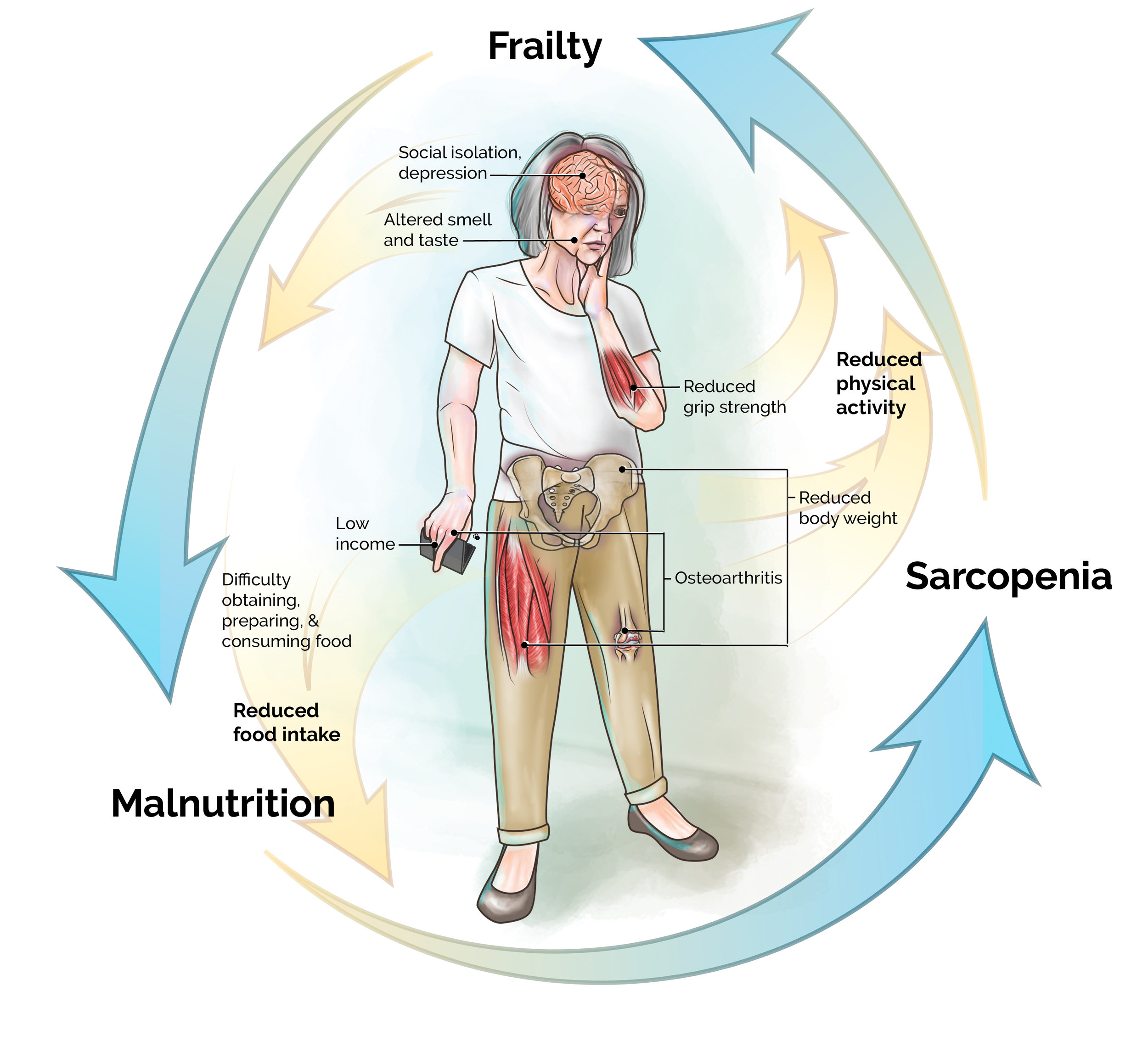Wellfie Wednesday Tip #135: Beware the Cycle of Malnutrition
/Happy Wellfie Wednesday! Welcome back! This week is brought to you by Patrick (@TheFuelPhysio) and it highlights a recent publication that looks at malnutrition, frailty, and sarcopenia (muscle loss) in older adults. The piece was written to help physical therapists understand the importance of nutrition in older adults and give them practical tools to address malnutrition and their patient’s eating behaviors. However, the information can be used beyond physical therapists and is applicable to any rehab profession, such as occupational and speech therapy alike.
Abstract
“The intersectional relationship between malnutrition, frailty, and sarcopenia in older adults presents unique challenges for health care providers. Malnutrition, specifically, is a leading risk factor for disability, morbidity, and mortality in older adults. Despite improvements in screening procedures, many older adults at risk for malnutritionare not identified, which prevents effective management. Utilizing interdisciplinary approaches toward malnutrition screening is both effective and feasible. Physical therapists can play an important role in both the identification and management of malnutrition in older adults by remaining aware of common nutritional concerns in older adults and performing routine malnutrition screening.”
Severin, R., Berner, P. M., Miller, K. L., & Mey, J. (2019). The Crossroads of Aging: An Intersection of Malnutrition, Frailty, and Sarcopenia. Topics in Geriatric Rehabilitation, 35(1), 79-87.
Summary
“Malnutrition has significant consequences on patient outcomes, especially in older adults. Unfortunately, many older adults who are malnourished go untreated because of gaps in screening for malnutrition and malnutrition risk. Physical therapists can play an important role in the identification and management of malnutrition and malnutrition risk by remaining aware of common concerns in older adults and by performing routine malnutrition screening. Although medical nutrition therapy is performed by registered dietitians, physical therapists can provide basic nutritional education and should do so while acknowledging their scope of practice and their patients' medical and nutritional needs. In addition, the combination of physical therapy and nutritional interventions may provide optimal patient outcomes. Despite variations in scope of practice, all members of the health care team must strive to improve patient care through interprofessional communication and collaboration.”
Though it was written with a clinical mindset, the article still contains information that can be helpful to the everyday adult. Such as highlighting current evidence that protein needs for older adults may be upwards of 1.2 g of protein/kg of bodyweight, far greater than the standard recommendation of 0.8 g of protein/kg of bodyweight. And practical information such as common food-drug interactions and potential affects on appetite due to medications.
Check out the article in its entirety
The Crossroads of Aging: An Intersection of Malnutrition, Frailty, and Sarcopenia
Thanks for all of the support, be sure to post your pictures this week and tag the WW crew members in your post (@TheFuelPhysio, @Eric_in_AmERICa, @FreestylePhysio, @DianaKlatt) and keep the wave of healthy change going!
Resource: Severin, R., Berner, P. M., Miller, K. L., & Mey, J. (2019). The Crossroads of Aging: An Intersection of Malnutrition, Frailty, and Sarcopenia. Topics in Geriatric Rehabilitation, 35(1), 79-87.
- WW Crew


